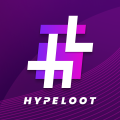Promosi
Publikasikan ICO
Koin
Calendar
Acara Crypto
Berita
DeFi
NFT
WEB3
Games
Tren
-
ID
English Русский Deutsch Español French Italian Portugues Indonesian Turkish Dutch العَرَبِيَّة বাংলা 中文(简体) 한국 हिन्दी 日本語
- Masuk

Imagine a scalable, quantum-resistant blockchain securing an uncensorable and free internet through a hack-resistant Operating System, virtualizing access to your desktop and digital content from any computer in the world. Nexus is bringing this possibility to life with an end-to-end decentralized platform designed to empower every human being with technology to reclaim their digital identity.
Your gateway to Nexus begins with a username, password and PIN. Send free and reversible transactions, while staking NXS to receive rewards. Uses range from invoicing clients, to issuing contracts, creating NFTs or Namespaces (Dot-com equivalent).
Nexus’ integrated API makes developing decentralized applications (DApps) easy with “no-code” web tools like Bubble. Create tokens and assets (NFTs), design contracts, or use our templates. All our features are available on the public network or a private (hybrid) chain.
Nexus is a vibrant and creative community with a passion to decentralize the world. Whatever your calling, you can shape the future through your contribution or by simply spreading the word.
TRITIUM
TRITIUM++
AMINE
OBSIDIAN



















Penawaran ini didasarkan pada informasi yang diberikan semata-mata oleh pemberi penawaran dan informasi lain yang tersedia untuk umum. Penjualan token atau acara pertukaran yang sama sekali tidak terkait dengan ICOholder dan ICOholder tidak memiliki keterlibatan di dalamnya (termasuk dukungan teknis atau promosi). Penjualan Token terdaftar dari orang-orang yang tidak memiliki hubungan dengan ICOholder yang hanya dapat membantu pelanggan melacak aktivitas yang terjadi di dalam keseluruhan token sector. Informasi ini tidak dimaksudkan untuk memberikan nasihat yang harus Anda andalkan. Anda harus mendapatkan saran profesional atau spesialis atau melakukan due diligence Anda sendiri sebelum mengambil, atau menahan diri, tindakan berdasarkan konten di situs kami. Syarat dan ketentuan apa pun yang dimasukkan oleh kontributor sehubungan dengan perolehan Token ada di antara mereka dan penerbit Token dan ICOholder bukanlah penjual Token tersebut. Pemegang ICO tidak memiliki tanggung jawab hukum atas setiap pernyataan yang dibuat oleh pihak ketiga sehubungan dengan penjualan Token dan setiap klaim atas pelanggaran kontrak juga harus dilakukan secara langsung terhadap entitas penerbit Token yang tercantum di sini.
Jika Anda memiliki masalah tentang sifat, kepatutan atau legalitas penjualan token ini atau orang-orang yang terlibat di dalamnya, hubungi info@icoholder.com dengan informasi rinci tentang masalah Anda.